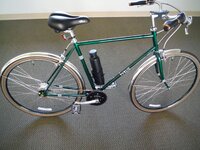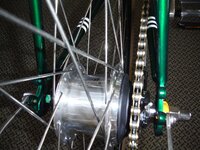bluecat
Well-Known Member
I can't follow this statement. I'm looking intensive on the pictures of a Stromer after a heavy snow, salt and sludge ride published above. The motor is the sole parte with almost no snow....Very unfortunate but it’s part of the design flaws of hub motors in general. Hubs are more exposed to the elements especially being in the rear wheel with all the snow flying around the rim and saturating the motor. Mid-drives are insulated from this and aren’t affected. One of the many pros of mid-drives over hub motors.
Furthermore, I can't solve the equation:
How many milliliters of water might be needed to get the motor blocked by freezing - if you consider the size of the wheel which is the size of the lever? And now: Why did this amount of probably salty water not lead to a short circuit during the ride?

